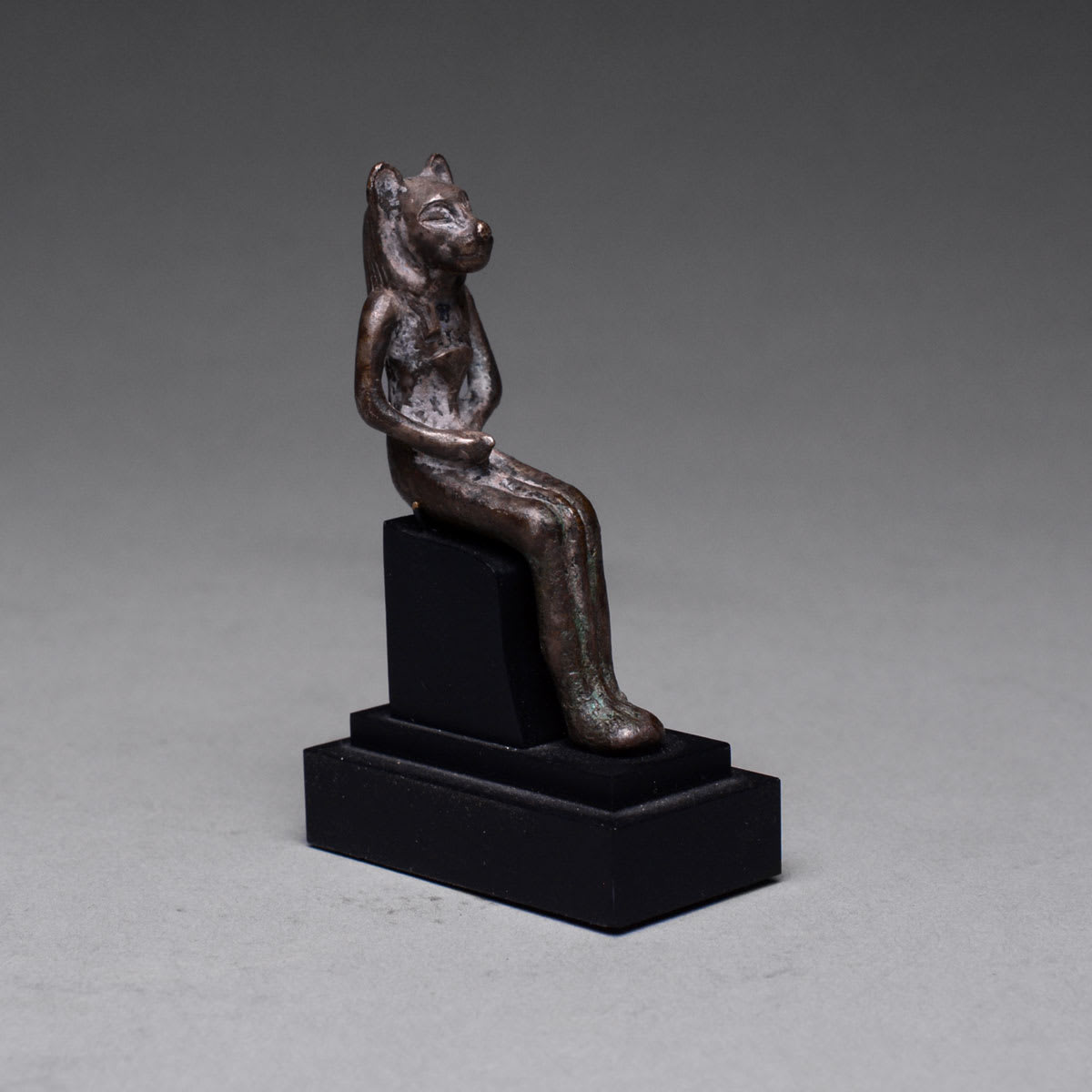Egyptian Electrum Amulet of Sekhmet, 716 BCE - 30 BCE
Electrum
height 6.4 cm
height 2 1/2 in
height 2 1/2 in
X.0179
Further images
Sekhmet, along with her husband the creator-god Ptah and their son Nerfertum, was part of the powerful trio of deities that protected Ancient Memphis. She was a sun goddess, embodying...
Sekhmet, along with her husband the creator-god Ptah and their son Nerfertum, was part of the powerful trio of deities that protected Ancient Memphis. She was a sun goddess, embodying the scorching, burning, destructive heat of the sun. Fierce goddess of war, the destroyer of the enemies of Ra and Osiris, she was represented as having the head of a lioness and the body of a female human. Like the sun, her temper was uncontrollable. In the legend of Ra and Hathor, Sekhmet's anger became so great, she would have destroyed all of mankind if Ra had not taken pity on us and made her drunk.
This diminutive electrum amulet is a masterpiece of intricacy. Originally, this ancient statuette would have been attached to a small base, perhaps inserted into a shrine of sorts, as indicated by the pin underneath her feet. She is depicted with the head of a lion and the body of a human wearing a long, close fitting robe. Represented seated, she holds long stemmed lotus bud in her right hand. The features of the lioness are remarkably naturalistic, and yet, at the same time, we can sense the power of her divinity. Perhaps this pendant once stood on a shrine inside the house of a high-ranking official from the city of Memphis. Surely, given the inherent value of the material, the symbolic significance of Sekhmet, and the absolute mastery of the carving, this pendant could only have been possessed by an elite member of Ancient Egyptian society. Certain objects, masterpieces treasured in their own time, are of an eternal beauty that is easily appreciated regardless of era or culture. This amulet is one such stunning example; a reminder of the tremendous splendor humanity is able to create when at the apex of a great civilization.
This diminutive electrum amulet is a masterpiece of intricacy. Originally, this ancient statuette would have been attached to a small base, perhaps inserted into a shrine of sorts, as indicated by the pin underneath her feet. She is depicted with the head of a lion and the body of a human wearing a long, close fitting robe. Represented seated, she holds long stemmed lotus bud in her right hand. The features of the lioness are remarkably naturalistic, and yet, at the same time, we can sense the power of her divinity. Perhaps this pendant once stood on a shrine inside the house of a high-ranking official from the city of Memphis. Surely, given the inherent value of the material, the symbolic significance of Sekhmet, and the absolute mastery of the carving, this pendant could only have been possessed by an elite member of Ancient Egyptian society. Certain objects, masterpieces treasured in their own time, are of an eternal beauty that is easily appreciated regardless of era or culture. This amulet is one such stunning example; a reminder of the tremendous splendor humanity is able to create when at the apex of a great civilization.







